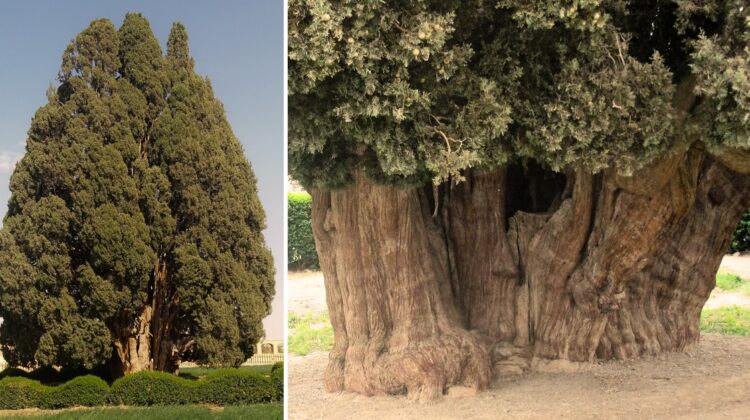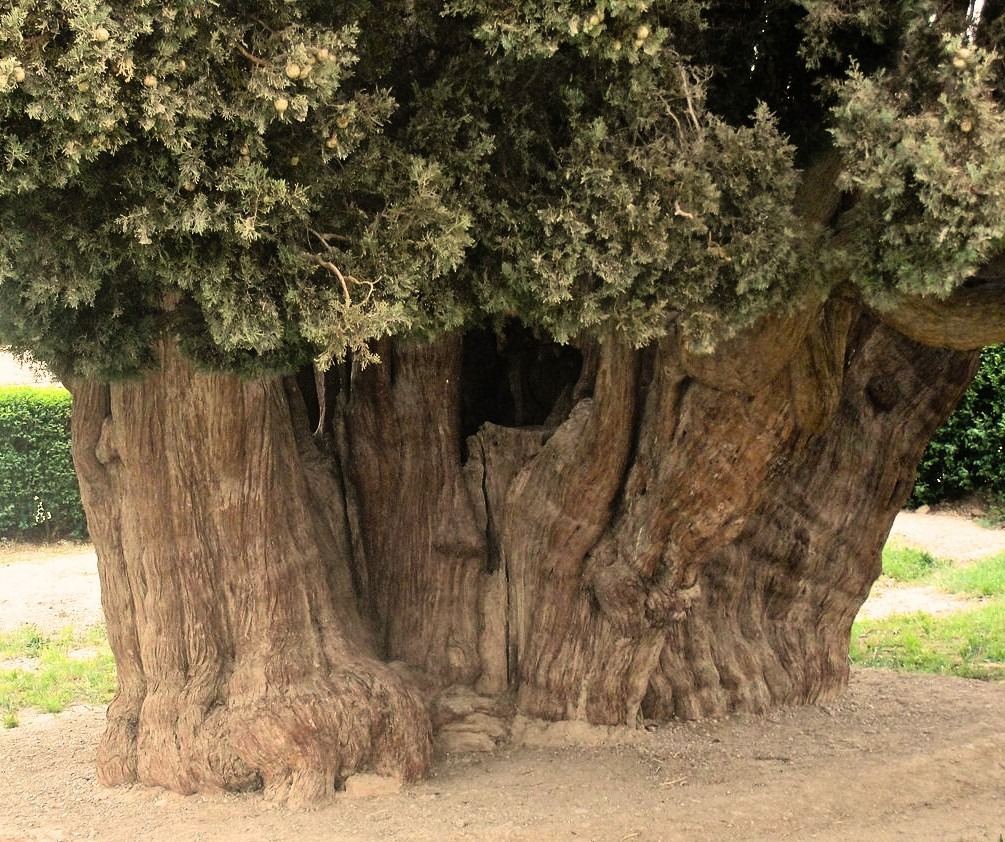
Nestled in Abarkuh City, Yazd Province, Iran, the Cypress of Abarkuh, also known as Sarv-e Abarkuh or Zoroastrian Sarv, stands as an awe-inspiring testament to the passage of time. Believed to be the oldest living tree in Asia, this majestic cypress is estimated to be over 4,000 years old, captivating visitors with its ancient allure and rich history.

The Cypress of Abarkuh, a member of the Cupressus sempervirens species native to the Mediterranean region, reaches a towering height of 25 meters (82 feet). Its trunk boasts a circumference of 11.5 meters (37 feet), while its branches span an impressive 18 meters (59 feet). Adorned with dark green foliage and a distinctive conical shape resembling a flame, this remarkable tree is a living embodiment of nature’s resilience.

Throughout its millennia-long existence, the Cypress of Abarkuh has borne witness to countless historical events, weathered the test of time, and stood resilient in the face of wars, invasions, and human interference. Recognizing its exceptional significance, the Cultural Heritage Organization of Iran has safeguarded it as a national natural monument, drawing tourists from far and wide to witness its magnificence.

Beyond its natural allure, the Cypress holds cultural and religious significance, particularly for Zoroastrians. Regarded as a sacred symbol of life and beauty, the tree is woven into the fabric of Zoroastrian beliefs. Legends surrounding the Cypress add to its mystique, with tales suggesting it was planted by Zoroaster, the founder of Zoroastrianism, during his journey to spread teachings, or alternatively, by Japheth, Noah’s son, after the great flood.

The Cypress of Abarkuh remains a living link to the past, offering shade, shelter, and inspiration to generations that have sought refuge under its ancient branches. As a silent witness to the ebb and flow of history and culture in Iran and Asia, this enduring tree stands as a testament to the beauty of nature’s longevity and the profound connection between the natural world and human civilization.

Leave a Reply